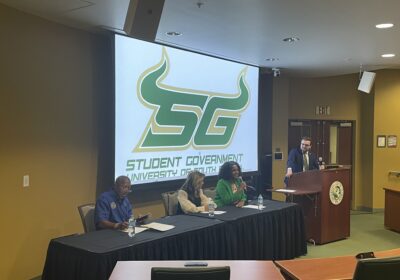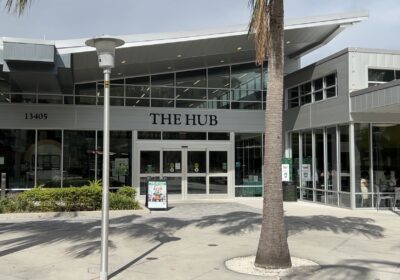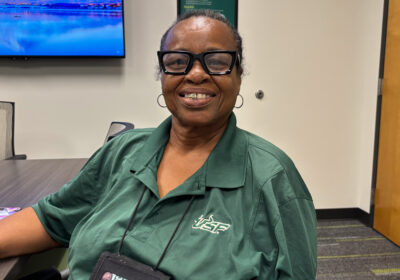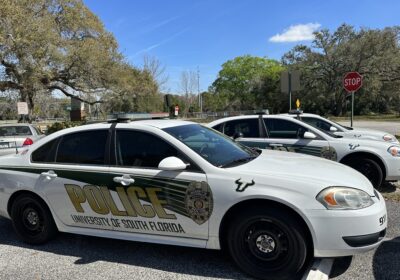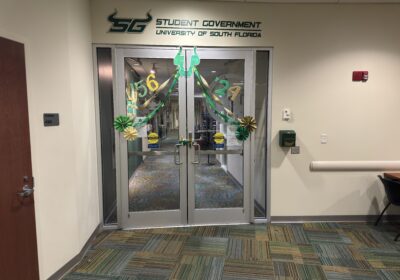USF audiology clinic helps remove barriers with clear masks for hearing-impaired patients
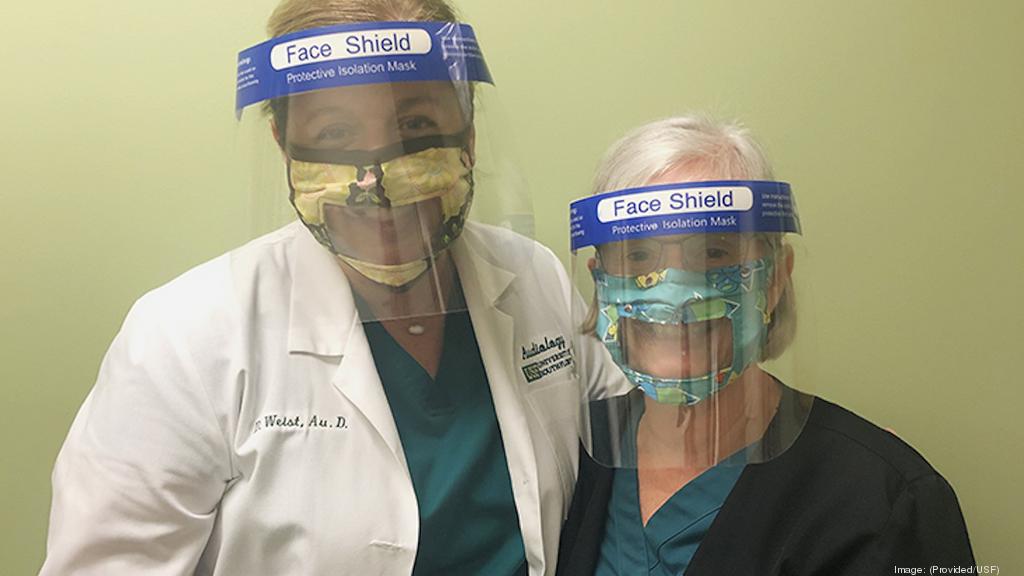
Face masks have become the new normal when venturing out during the pandemic. While it helps mitigate the risks of spreading COVID-19, it also can make communication more difficult, especially for people with hearing loss.
Faculty members from the USF Hearing Clinic started a project in April to create face-view masks that would help their patients see the facial expressions of people at the health center. Devon Weist, instructor at the Department of Communication Sciences and Disorders and director of the USF Hearing Clinic, said people with hearing loss rely on facial expressions and on lip reading to complete and make sense of information that they might have missed.
With a high demand for face masks, people suffering from hearing loss face more barriers when communicating with others.
“What happens anytime someone wears a mask is that it’s obviously blocking our face and our lips. So when we talk, it’s shielding,” said Weist. “Not only can you not see what’s happening, but it’s also providing a layer over top of our mouth. So things sound muffled… even for people who have normal hearing, everything gets blocked.
“We were noticing that the patients in our clinic who have hearing loss were really struggling to understand what we were saying, and we knew that was going to be a problem.”
After brainstorming ideas on how to help patients at the clinic, Weist saw a post on social media about a student from the University of Kentucky who was making masks with a transparent covering in front of the mouth. She then contacted the student to learn more about the clear masks and bring them to the clinic.
“[The student] sent me the pattern of how to sew them and then it turned into contacting everybody that we knew that had sewing machines to see if we could get them made for us as providers and the students that are in our doctoral program for when they come back into the clinic,” said Weist.
“What [the mask] does is it makes things easier for people to be able to see so they can see people’s lips move. We can see their facial expressions, you know if somebody’s smiling or somebody frowning or somebody’s upset about something, so it gives people back the facial cues that you can’t see when their face is totally covered.”
After Weist spread the idea of using these masks at USF’s Hearing Clinic, more people joined the project, including audiology instructor Dr. Bettina Tucker.
As a member of the Tampa Gems Sertoma Club, an organization that focuses on hearing disabilities, Tucker contacted members of the club to get more help. Donna Silagi, a member of the club, and Theresa Gonzales, the club secretary, volunteered to make some masks.
Silagi did the preparation work for the masks, including cutting out vinyl and finding the material for the masks. Then she gave them to Gonzales, who sewed about 15 of them.
“I did it over a period of two weeks because I’m a senior citizen,” Gonzales said. “I’m 79 years old. And so I couldn’t sew for too long at a time. I tried to take breaks and so I spread it out. But these were challenging beats … because my machine is just a regular home machine. It wasn’t really built for that type of sewing. And so it was challenging.”
Besides the Tampa Gems Sertoma Club, students that work at the clinic, faculty members and their families collaborated in the project by making face-view masks as well. Patricia Carr, audiology instructor at USF, has a hearing problem herself, so she did not hesitate to join the project.
“I couldn’t resist because having a hearing disability myself and knowing how important it is to see that the facial cues aid in communication, because with the regular masks you can’t see a person’s personality or any of the facial expression that we use to complement what we’re hearing when we communicate with one another,” said Carr. “So I dusted off my sewing machine, got hold of the pattern and got online and ordered materials.”
Carr said sometimes the limitations that normal masks have for people with hearing loss makes her not want to communicate at all. She has tried alternative solutions such as getting closer to people, but social distancing rules make that difficult.
“You’re trying not to get too close,” Carr said. “But the other option would be writing something down on paper, or if they have a tablet they could write it on a tablet, or their phone but then again, you don’t want to touch their devices too because of the social distance thing.”
She said patients at the clinic might feel more isolated due to the normal masks, which is why they have reacted positively since doctors and students started using them at the clinic in May.
“Our patients, first of all, every time they come out, and they can see our face, they get so excited about it,” said Weist. “And then they realize that it’s much easier to see when we’re telling them things, so patients have really caught on with it and been very appreciative that we’re trying to look out for them. And we’re trying to be creative through this, but also keep people safe.”
Audiology researchers at USF’s Auditory and Speech Science Laboratory in the Global Center for Hearing and Speech Research also started using clear masks when conducting studies.
USF audiology student Dana Cherri said participants of the research get excited about the clear masks.
“The participants are really happy,” said Cherri. “They’re happy that we took that into consideration because some people with hearing loss don’t even tell other people that they’re reading their lips, it just comes naturally. So when this is gone, they need to find something else to rely on to understand people.”
Even if the clear masks fog up sometimes, Carr said it is better than nothing, given the circumstances.
“What I like is that I can see other people’s faces when we have that face view in there and they’re looking at me too, because they’re seeing my personality,” said Carr. “They’re seeing my expressions and I’ve noticed people are calmer. They’re more involved in the conversation because it’s more personal now.”
Now, Weist said the goal is to spread the benefits of the clear masks to other people who have communication difficulties, such as aphasia, since they also need facial cues to understand and express themselves.
If the Hearing Clinic has some left masks after gearing up students and doctors, they want to donate some to the Deaf and Hard of Hearing program in Hillsborough County schools. Weist also hopes that students and instructors of sign language will have clear masks because facial expressions are a big part of this communication.
According to Silagi, this ongoing initiative at USF also raises awareness on hearing impairments and the fact that many people have them.
“Our hope really is that people just understand that you can’t see hearing loss, it is not something that you can look at someone and know they have it. It’s not like their ears show signs or anything like that. So I think it’s been really great to just help people realize that there’s a lot of people that have hearing loss and being able to communicate with them and make sure that they can hear is super important,” said Silagi.
“I think that has been one of the best things that has come out of this indirectly, it’s just to let people know that there’s a lot of people walking around that have hearing difficulties. And there are things that we can do versus just yelling at people all the time.”

